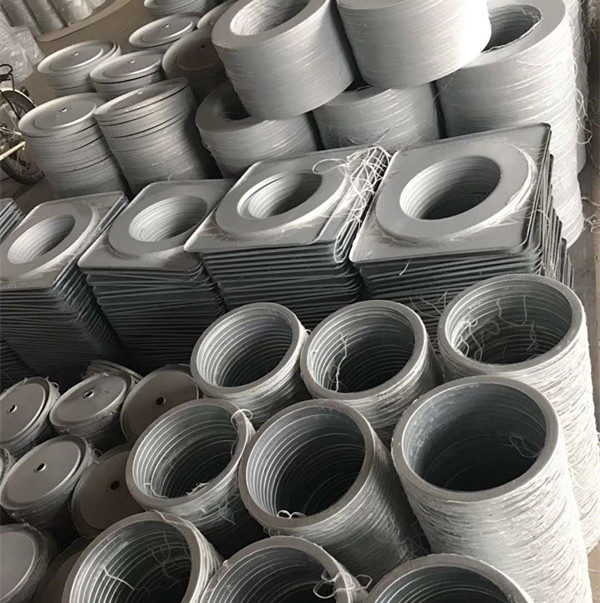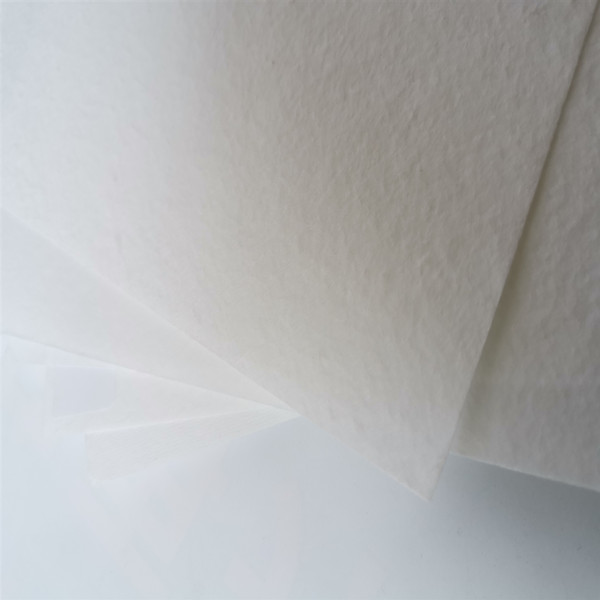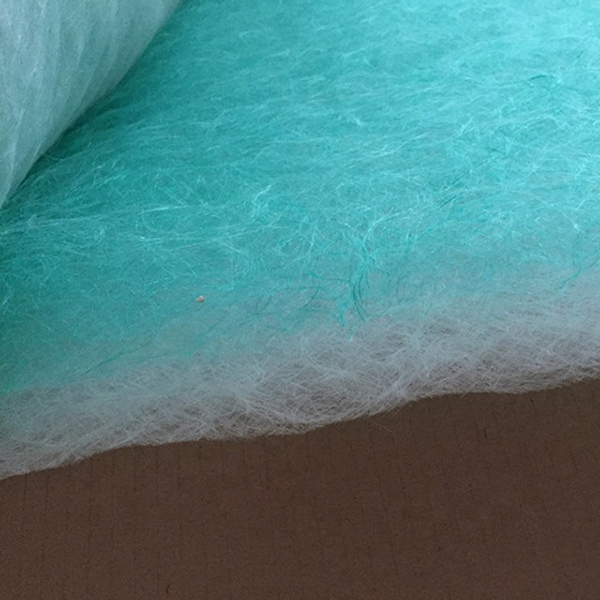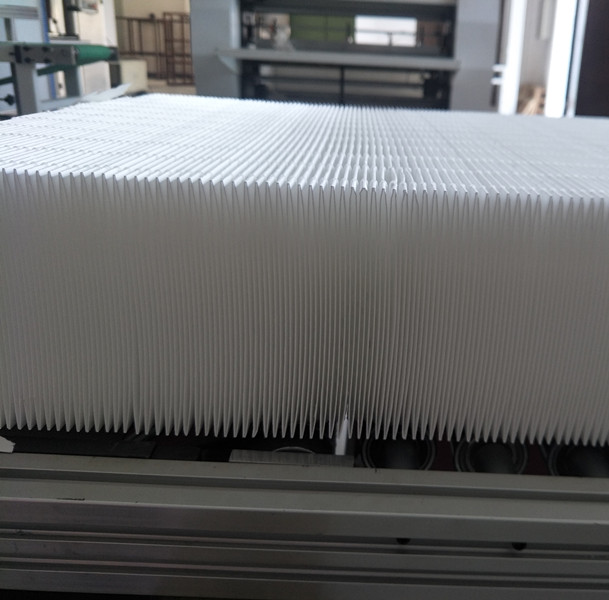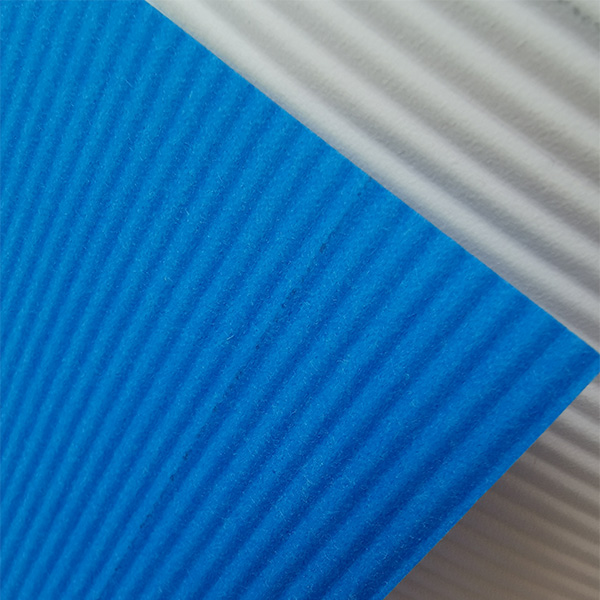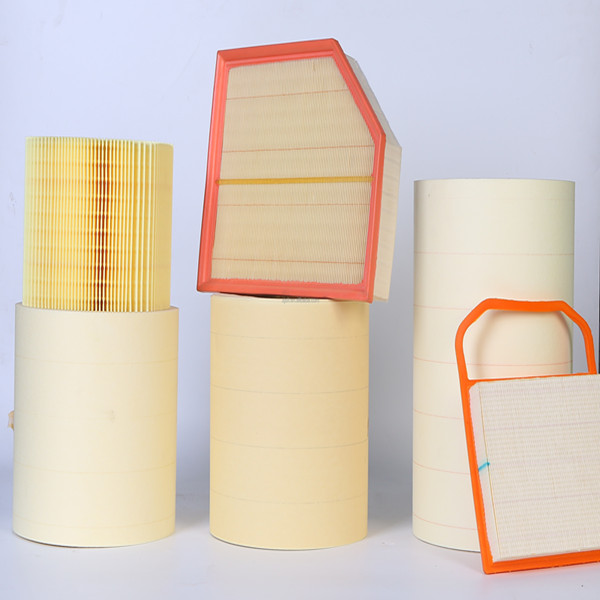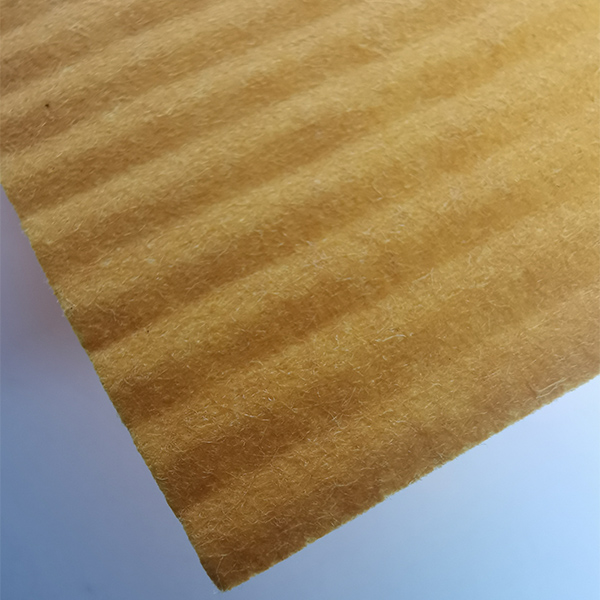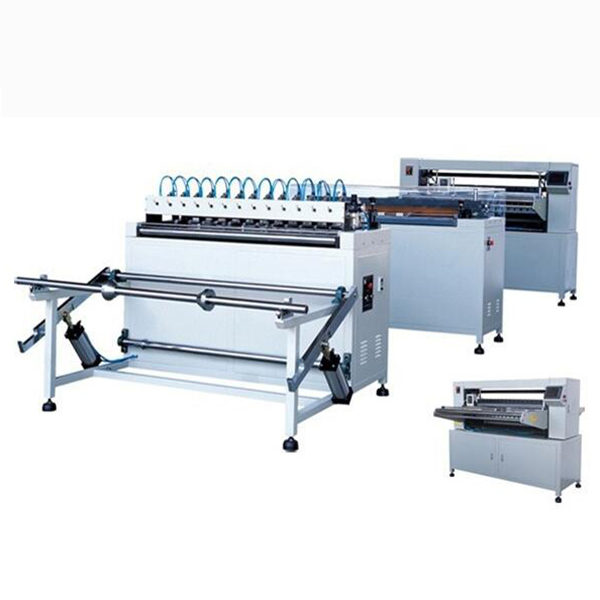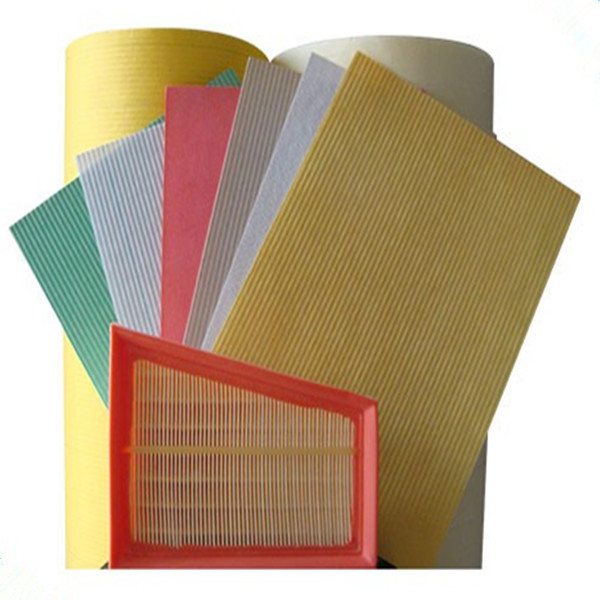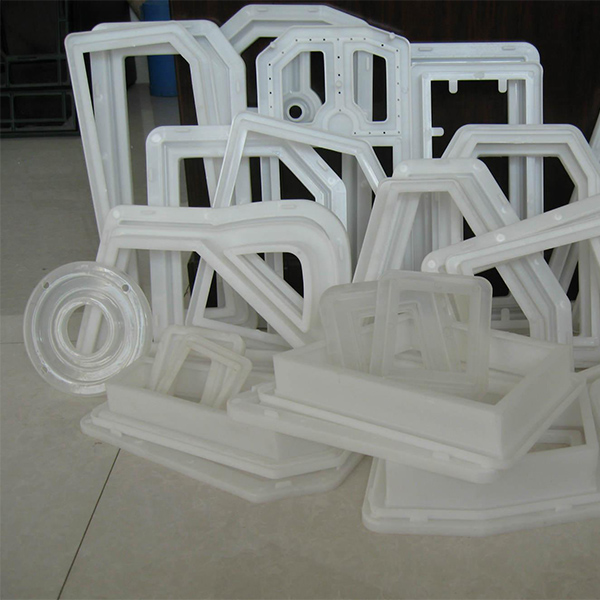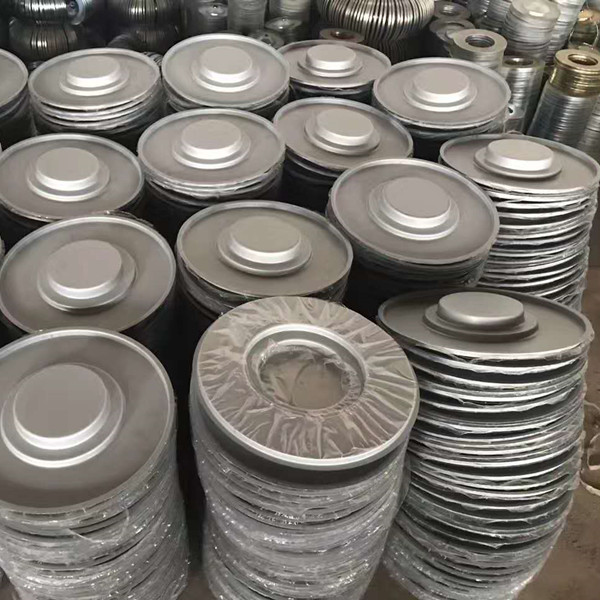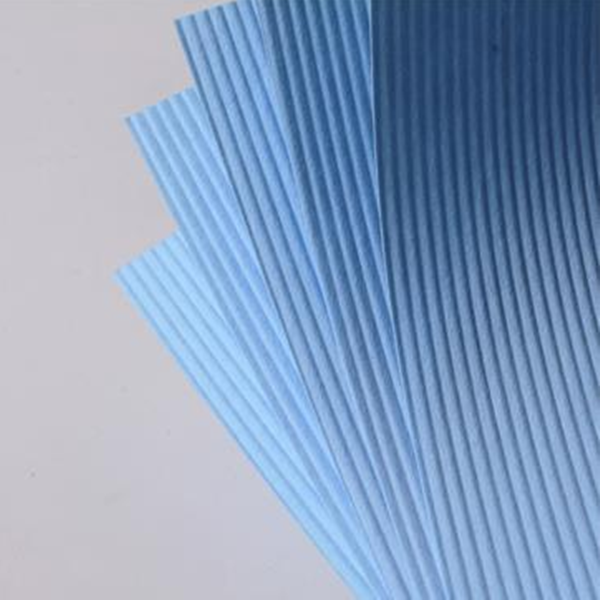The Pivotal Role of RO Consumables Kits in Advanced Water Purification Systems: An In-Depth Analysis of Industry Trends and Technical Imperatives
In the burgeoning landscape of industrial and municipal water treatment, the efficacy and longevity of reverse osmosis (RO) systems are inextricably linked to the quality and timely replacement of their core components. This critical assembly, often referred to as an RO consumables kit, represents the very heart of filtration and separation processes, directly influencing permeate quality, operational efficiency, and overall system longevity. Modern industry trends are increasingly emphasizing sustainable water management, stricter discharge regulations, and the imperative for high-purity water across diverse sectors, from pharmaceutical manufacturing to microelectronics production. Consequently, the demand for robust, high-performance RO consumables kits has surged, driven by a global shift towards resource optimization and environmental compliance. These kits typically comprise essential elements such as pre-filters (sediment, carbon block), RO membranes, post-filters, and often critical ancillary components like antiscalants, cleaning chemicals, and even components for the ro booster pump kit, all designed to maintain optimal system performance. The strategic selection and procurement of these components are paramount for plant managers and technical directors, who must balance capital expenditure with operational costs while consistently meeting stringent water quality specifications. Future trends indicate a move towards more intelligent, self-monitoring consumables, enhanced by IoT and AI, which will predict replacement needs and optimize system performance autonomously, further solidifying the indispensable nature of a well-engineered ro consumables kit in ensuring the uninterrupted and efficient operation of reverse osmosis facilities worldwide. The focus is not merely on filtration, but on the holistic ecosystem of water purity, demanding a meticulous approach to every component within the kit, recognizing its singular contribution to the broader, complex process of water purification and resource sustainability.
The Advanced Manufacturing Process of RO Consumables Kits: Ensuring Purity and Durability Through Precision Engineering
The manufacturing of a high-performance ro consumables kit is a testament to precision engineering, advanced material science, and rigorous quality control, embodying the expertise required to produce components critical for ultra-pure water systems. The process begins with the meticulous selection of raw materials, which vary significantly depending on the component. For pre-filters, high-grade polypropylene is often used for sediment removal, while activated carbon, sourced from coconut shells or coal, forms the basis for carbon block filters designed to remove chlorine and organic contaminants. RO membranes, the core of the system, are typically fabricated from thin-film composite (TFC) materials, often polyamide, which are precisely cast onto a porous support layer through a complex polymerization process that dictates their semi-permeable properties and rejection rates. Post-filters frequently utilize granular activated carbon (GAC) for final polishing. Key manufacturing processes involved include injection molding for filter housings, precise winding techniques for sediment filters to achieve specific micron ratings, sophisticated casting and winding for membrane elements, and specialized blending and curing for bonding agents such as PU Adhesive Polyurethane Adhesive For Air Filter PU Glue, which ensures robust and leak-proof seals within filter cartridges and membrane elements. For instance, the application of PU Adhesive Polyurethane Adhesive For Air Filter PU Glue is critical in securing filter media and end caps, preventing bypass and ensuring structural integrity under operational pressures. Each stage of production adheres to stringent detection standards, including ISO 9001 for quality management systems, ANSI standards for performance validation, and specific material certifications like NSF/ANSI standards 42, 53, and 58 for drinking water components. These certifications are not merely bureaucratic hurdles but represent a commitment to the highest levels of safety and performance. The projected usage lifespan of an ro consumables kit varies; pre-filters typically last 3-6 months, carbon filters 6-12 months, and RO membranes 2-5 years, depending on feed water quality, operational parameters, and maintenance protocols. This variation necessitates a well-planned replacement schedule to avoid system degradation. An expertly crafted ro consumables kit finds its application across a broad spectrum of industries, including petrochemicals for process water and wastewater treatment, metallurgy for surface finishing and coolant management, municipal and industrial water and wastewater treatment plants for potable and discharge compliance, pharmaceuticals for WFI (Water For Injection) and USP-grade water production, and food & beverage for product water and sanitation. In these typical application scenarios, the advantages of a high-quality ro consumables kit are profound: significant energy savings due to lower differential pressure and reduced pump workload, enhanced anti-corrosion properties from high-grade, chemical-resistant materials ensuring system longevity, and superior contaminant rejection, leading to consistent high-purity water output. The continuous innovation in material science and manufacturing techniques for every component within the ro consumables kit ensures that industries can achieve their water quality objectives with greater efficiency and reduced environmental footprint.
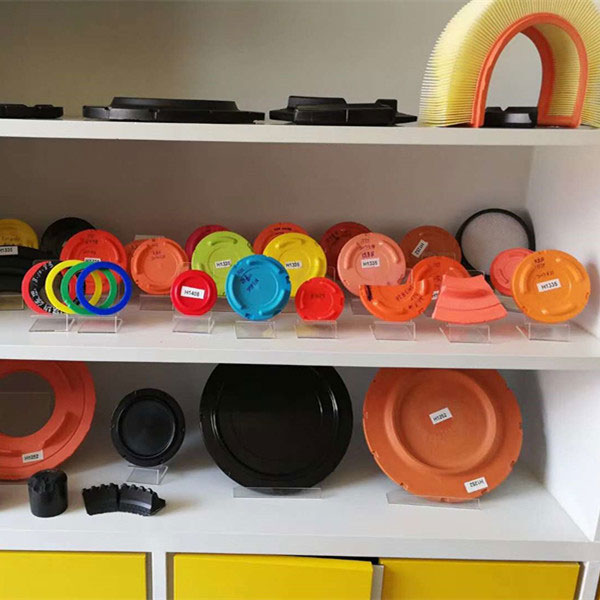
Fig 1: Illustrative diagram of key components and their interaction within an ro consumables kit.
Detailed Technical Parameters and Performance Metrics of RO Consumables Kits: A Data-Driven Approach to Component Selection
The selection of an optimal ro consumables kit necessitates a deep understanding of the technical parameters of each component, as these metrics directly translate into system performance, efficiency, and cost-effectiveness. For pre-filtration, critical parameters include micron rating (e.g., 5-micron, 1-micron), which defines the size of particles removed, and dirt holding capacity, indicating the filter's ability to retain solids before clogging. Carbon filters are evaluated based on their iodine number (adsorption capacity), chlorine reduction capability, and flow rate limitations. The RO membrane, the most crucial part of an ro consumables kit, is characterized by its nominal rejection rate (e.g., 98% for NaCl), permeate flow rate (gallons per day or liters per hour), minimum applied pressure, operating pH range, and maximum chlorine tolerance. For a complete understanding, one must consider what are the 5 types of filters commonly integrated into a comprehensive ro consumables kit: typically, these include a sediment filter to remove particulate matter, a granular activated carbon (GAC) filter for chlorine and organic compounds, a carbon block filter for fine carbon filtration, the RO membrane for dissolved solids, and a post-carbon filter for final taste and odor removal. Each filter type plays a distinct role, and their combined performance dictates the overall efficacy of the RO system. Furthermore, ancillary components like a ro booster pump kit, when included, are assessed by their flow rate, pressure output, power consumption (Watts or HP), and noise levels. The synergy between these components determines the overall system's ability to produce high-purity water efficiently. Understanding these parameters allows B2B decision-makers to conduct a comprehensive cost-benefit analysis, factoring in not just the initial purchase price but also long-term operational costs, energy consumption, and the expected lifespan of each part of the ro consumables kit. The table below outlines typical technical specifications for common components found within a standard ro consumables kit, offering a standardized reference for comparative analysis and informed procurement decisions. This granular approach to component specification ensures that the chosen ro consumables kit aligns perfectly with the unique demands of specific industrial applications, guaranteeing optimal performance and regulatory compliance.
| Component Type | Key Parameter | Typical Range/Value | Measurement Unit | Expected Lifespan (Avg.) |
|---|---|---|---|---|
| Sediment Filter (PP Melt Blown) | Micron Rating | 1 - 5 | Microns (µm) | 3-6 Months |
| GAC/Carbon Block Filter | Chlorine Reduction | >90% | Percentage (%) | 6-12 Months |
| RO Membrane (TFC Polyamide) | Salt Rejection Rate (NaCl) | 98 - 99.5 | Percentage (%) | 2-5 Years |
| RO Membrane | Permeate Flow Rate | 50-1000 | GPD (Gallons Per Day) | N/A (intrinsic to membrane) |
| Post-Carbon Filter | Taste & Odor Reduction | Excellent | Qualitative | 12 Months |
| Booster Pump (within ro booster pump kit) | Operating Pressure | 60-80 | PSI | 3-5 Years |
Beyond these individual component specifications, the synergy within the complete ro consumables kit determines the system's overall efficiency and reliability. For instance, the pre-filters’ ability to effectively remove suspended solids and chlorine directly impacts the lifespan and performance of the delicate RO membrane. Neglecting the replacement of a sediment filter can lead to fouling of the membrane, reducing its permeate flow and increasing the frequency of costly membrane cleaning or replacement, thereby significantly increasing operational expenditure. Similarly, insufficient chlorine removal by carbon filters can cause irreversible damage to polyamide RO membranes, necessitating premature membrane replacement, an expensive and disruptive event. Therefore, while individual parameters are important, it is the integrated performance of the entire ro consumables kit that truly defines the success of an RO water purification system. Manufacturers and suppliers providing a comprehensive ro consumables kit must ensure that all components are not only individually high-performing but also chemically and physically compatible to optimize overall system output and extend the maintenance cycle.
Versatile Application Scenarios for RO Consumables Kits: Driving Purity Across Diverse Industries
The ubiquitous need for high-purity water across an ever-expanding array of industrial and commercial applications underscores the indispensable role of the ro consumables kit. From critical process water in manufacturing to potable water for consumption, these kits are engineered to meet the stringent demands of diverse environments. In the pharmaceutical industry, for example, an ro consumables kit is fundamental for producing Water for Injection (WFI) and purified water (PW) that meet pharmacopeial standards (e.g., USP, EP). Here, the consistency of permeate quality, minimal microbial contamination, and reliable removal of endotoxins are non-negotiable, directly impacting patient safety and product efficacy. For microelectronics and semiconductor manufacturing, ultra-pure water (UPW) is paramount, requiring the removal of even trace amounts of ions, particles, and organic matter. The specialized membranes and fine polishing filters within an ro consumables kit ensure the absence of contaminants that could otherwise compromise delicate circuits and yield rates. In the food and beverage sector, water quality directly affects product taste, shelf life, and regulatory compliance. An ro consumables kit facilitates the removal of undesirable minerals, bacteria, and taste-altering compounds, ensuring consistent product quality for bottled water, soft drinks, breweries, and dairies. Desalination plants, facing increasing water scarcity, rely on high-rejection RO membranes within their ro consumables kit to convert seawater or brackish water into potable water, a process that is both energy-intensive and highly dependent on the efficiency and longevity of the membranes and pre-filters that protect them from fouling. Industrial wastewater treatment is another significant application area where the ro consumables kit plays a pivotal role in achieving discharge compliance or enabling water reuse. Industries such as textiles, automotive, and general manufacturing utilize RO to remove heavy metals, dyes, and other pollutants, transforming contaminated effluent into environmentally safe discharge or even a valuable resource for closed-loop systems. The effectiveness of the ro consumables kit directly correlates with operational uptime and compliance with ever-tightening environmental regulations. Feedback from clients in these sectors consistently highlights the importance of reliable components that reduce system downtime and operational expenditure. For instance, a major industrial laundry reported a 30% reduction in chemical cleaning frequency and an extended membrane life by 18 months after switching to a higher-grade ro consumables kit featuring advanced anti-fouling pre-filters and durable RO membranes, showcasing the tangible benefits of investing in quality. Each application, while unique in its specific water quality targets, shares the common need for a robust and reliable ro consumables kit to ensure continuous operation, protect high-value downstream equipment, and ultimately, safeguard public health and environmental integrity.
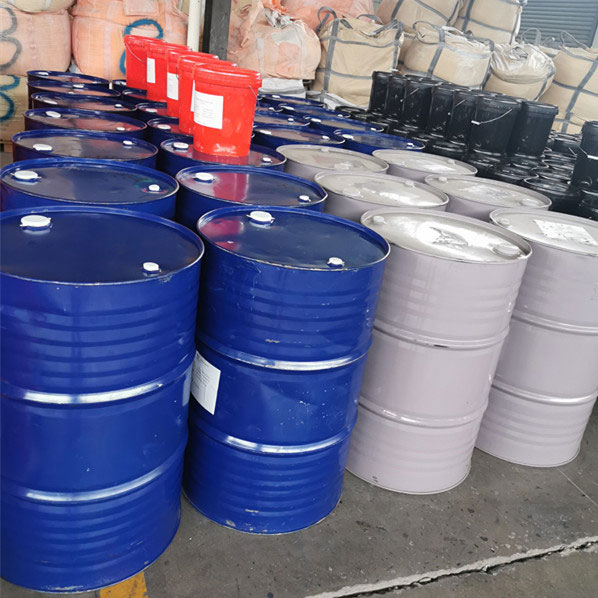
Fig 2: A typical industrial RO system utilizing a comprehensive ro consumables kit for high-purity water production.
The Tangible Technical Advantages of a High-Quality RO Consumables Kit: Optimizing Performance and Cost-Efficiency
Investing in a superior ro consumables kit offers a cascade of technical advantages that directly translate into significant operational benefits and long-term cost savings for any industrial or commercial RO system. Foremost among these is enhanced filtration efficiency. High-quality sediment filters, often utilizing advanced melt-blown polypropylene with graded pore structures, achieve superior particle removal, effectively reducing the turbidity and silt density index (SDI) of the feed water. This meticulous pre-filtration protects the delicate RO membranes from premature fouling by suspended solids, thereby extending membrane lifespan and reducing the frequency of costly chemical cleanings. Similarly, premium carbon filters, whether granular activated carbon (GAC) or carbon block, demonstrate higher adsorption capacities for chlorine, chloramines, and organic contaminants. Their ability to thoroughly remove these membrane-damaging oxidants is critical, as even trace amounts can lead to irreversible damage to thin-film composite (TFC) RO membranes, resulting in reduced permeate flow and increased salt passage. The RO membranes themselves, when sourced from reputable manufacturers and part of a certified ro consumables kit, offer higher nominal salt rejection rates and sustained permeate flow, even under challenging feed water conditions. This superior performance minimizes the need for multi-pass RO systems or post-treatment polishing, simplifying the overall process and reducing energy consumption. A well-designed ro consumables kit also contributes to an extended system life by mitigating stress on mechanical components, such as pumps and valves. Reduced membrane fouling means lower operating pressures are often sufficient to achieve target flow rates, decreasing the workload on the ro booster pump kit and extending its service life, while also lowering energy consumption. Improved water quality is another direct benefit, as the combined efficiency of all components in the ro consumables kit ensures consistent output that meets or exceeds the most stringent purity standards, critical for applications like pharmaceutical production or semiconductor manufacturing where deviations can lead to product batch rejection. Furthermore, the material compatibility of high-quality consumables ensures greater resistance to aggressive chemicals and varying pH levels often encountered in industrial feed waters, thus preventing premature degradation or leaching of undesirable substances into the treated water. For example, the robust adhesive used in filters, such as PU Adhesive Polyurethane Adhesive For Air Filter PU Glue, plays a vital role in maintaining structural integrity and preventing bypass. In essence, the technical advantages of a premium ro consumables kit create a virtuous cycle: better protection leads to longer membrane life, which leads to lower operational costs, less downtime, and consistently higher water quality, ultimately delivering a superior return on investment. This holistic enhancement of system performance is what differentiates a standard offering from a truly optimized purification solution.
Strategic Manufacturer Comparison for RO Consumables Kits: Criteria for Authoritative Procurement Decisions
The market for ro consumables kit is diverse, encompassing a spectrum of manufacturers from global conglomerates to specialized niche suppliers. For B2B buyers and technical procurement managers, a strategic manufacturer comparison is not merely about price, but about securing a reliable, high-performance, and trustworthy supply chain that ensures uninterrupted operations and consistent water quality. Key criteria for evaluating manufacturers of an ro consumables kit include comprehensive certifications, robust research and development capabilities, proven customization proficiency, superior after-sales support, and an unwavering commitment to material quality and ethical sourcing. Authoritativeness in this sector is demonstrated through adherence to international standards such as ISO 9001 for quality management, ISO 14001 for environmental management, and product-specific certifications like NSF/ANSI standards 42, 53, and 58, which validate the safety and performance of drinking water components. Manufacturers with strong R&D departments are often at the forefront of innovation, developing next-generation membranes with improved fouling resistance or filters with enhanced dirt-holding capacities, directly benefiting the longevity and efficiency of the ro consumables kit. Their ability to provide application-specific data and performance curves is a hallmark of expertise. Collaboration with established industry partners and a long service history in the water treatment sector further underscore a manufacturer's authority and reliability. For instance, a manufacturer with decades of experience supplying ro consumables kit to critical industries like pharmaceuticals or power generation carries significant weight. Material quality is paramount; detailed specifications on filter media, membrane polymers, and bonding agents like PU Adhesive Polyurethane Adhesive For Air Filter PU Glue should be transparent and verifiable. Suppliers who conduct rigorous in-house testing and provide test data, material safety data sheets (MSDS), and certificates of analysis (COA) demonstrate a commitment to trustworthiness. Furthermore, the capacity for customization is crucial, as water sources and treatment objectives vary widely. A manufacturer capable of assembling a tailored ro consumables kit for specific feed water chemistries, flow rates, or contaminant profiles offers a significant advantage over generic suppliers. This includes the flexibility to integrate specialized components such as a high-efficiency ro booster pump kit or unique filter configurations. Finally, exceptional customer service, including responsive technical support, clear warranty provisions, and efficient logistics for timely delivery, is essential for maintaining operational continuity. Comparing manufacturers based on these multifaceted criteria, rather than just upfront cost, ensures that the chosen ro consumables kit contributes to the long-term success, efficiency, and regulatory compliance of any water purification system, solidifying a supply partnership built on mutual trust and technical excellence.
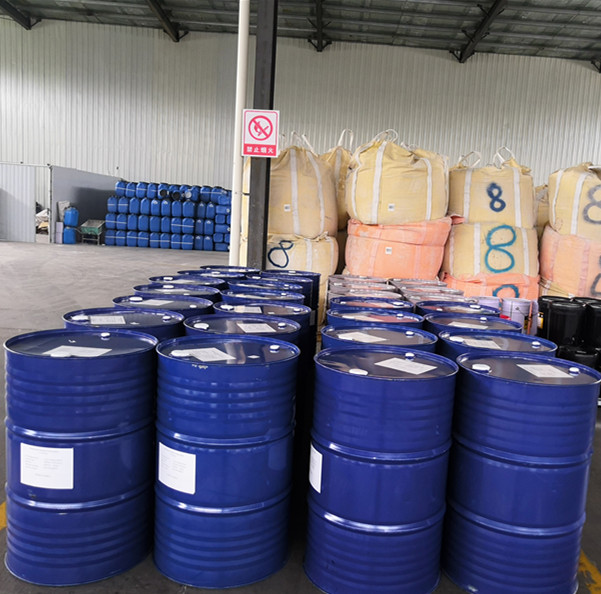
Fig 3: Quality control testing for components within an ro consumables kit, emphasizing precision and reliability.
Tailored Customization Solutions for RO Consumables Kits: Meeting Unique Industrial Demands
The "one-size-fits-all" approach rarely suffices in the complex world of industrial water treatment, making customization solutions for ro consumables kit an essential offering from leading suppliers. Every industrial application presents unique challenges: variations in raw water quality (e.g., high TDS, fluctuating turbidity, specific organic contaminants), diverse treatment objectives (e.g., potable water, process water, wastewater reuse), and distinct operational parameters (e.g., flow rates, pressure requirements, temperature variations). A generic ro consumables kit might achieve basic filtration, but an optimized, customized kit is engineered to maximize efficiency, extend component lifespan, and minimize overall operational expenditure by precisely addressing these specific variables. Customization typically begins with a comprehensive analysis of the client's feed water quality, often involving detailed chemical and physical analyses. Based on this data, experts can recommend specific pre-filter types (e.g., absolute-rated filters for critical applications, bag filters for high particulate loads), micron ratings, and even specialized media for carbon filters (e.g., catalytic carbon for chloramine removal). For the RO membrane itself, customization might involve selecting membranes optimized for high TDS rejection, low fouling propensity, or specific pH tolerance, ensuring the most effective and resilient performance against the unique feed water chemistry. For example, in applications with high silica or scaling potential, specific antiscalant dosing systems or RO membranes designed with wider feed spacers to reduce concentration polarization might be recommended as part of a tailored ro consumables kit. Furthermore, the integration of specialized ancillary equipment, such as a high-efficiency ro booster pump kit calibrated for precise flow and pressure requirements, or advanced dosing pumps for antiscalants and cleaning chemicals, can significantly enhance system performance and protect membrane integrity. A key aspect of customization also involves optimizing the ro consumables kit for specific operational cycles and maintenance schedules, aiming to synchronize replacement intervals across different components to reduce downtime and labor costs. Trustworthiness in a supplier's customization capabilities is built on their technical expertise, proven track record, and collaborative approach, working closely with clients to understand their exact needs and delivering solutions that are both technically sound and economically viable. By providing tailored ro consumables kit, suppliers empower businesses to achieve optimal water purification results, improve process efficiency, and ensure long-term sustainability in their operations, moving beyond generic products to truly integrated and specialized solutions.
Real-World Application Case Studies: Demonstrating the Impact of Optimized RO Consumables Kits
Experience demonstrates that the proper selection and consistent replacement of a high-quality ro consumables kit are not just maintenance tasks but strategic investments that yield significant operational benefits. Consider the case of a large-scale power plant in the Middle East, facing severe challenges with boiler feedwater quality due to highly saline and fluctuating raw water sources. Their existing RO system frequently experienced membrane fouling, leading to reduced permeate flow, increased chemical cleaning cycles, and costly downtime for membrane replacement, occurring every 18 months on average. Upon consulting with a specialized supplier, they implemented a customized ro consumables kit featuring high-rejection, low-fouling membranes and enhanced pre-filtration modules incorporating a specific media to handle high suspended solids and silica. The pre-filters were chosen for their superior dirt-holding capacity, and the entire ro consumables kit was designed to synchronize replacement cycles, minimizing maintenance disruptions. Post-implementation, the plant reported an impressive 40% reduction in chemical cleaning frequency, a 25% decrease in energy consumption due to lower operating pressures, and a remarkable extension of membrane life to over 3.5 years, translating into multi-million dollar annual savings in operational expenditure and maintenance. Another compelling example comes from a major pharmaceutical manufacturing facility in Europe, where the consistent production of Water for Injection (WFI) is critical for drug safety and compliance with stringent regulatory standards like FDA and EMEA. Their challenge was maintaining consistent water purity while reducing the risk of microbial contamination and meeting stringent TOC (Total Organic Carbon) levels. After implementing a premium ro consumables kit that included pharmaceutical-grade RO membranes with validated rejection rates and advanced post-RO polishing filters (e.g., sterile depth filters and specialized UV treatment compatible with the ro consumables kit), they achieved a significant improvement. The new ro consumables kit helped maintain consistent TOC levels well below regulatory limits and reduced microbial excursions by over 90%. This enhanced performance not only ensured compliance but also significantly reduced the risk of batch rejection, which has enormous financial implications in the pharmaceutical industry. The precise integration of components within the ro consumables kit, including a carefully chosen ro booster pump kit to maintain optimal flow and pressure, proved vital in achieving these critical purity parameters. These cases underscore that a carefully selected and high-quality ro consumables kit is not merely a collection of parts but a strategic solution that drives efficiency, ensures compliance, and delivers tangible economic benefits in the most demanding industrial environments.

Fig 4: High-purity water output from an industrial RO system, a direct result of effective ro consumables kit maintenance.
Frequently Asked Questions (FAQs) Regarding RO Consumables Kits: Enhancing User Understanding and Trust
For B2B stakeholders considering or managing RO systems, clarity on the intricacies of their ro consumables kit is crucial for informed decision-making and optimal system management. This FAQ section addresses common queries, building trustworthiness through transparent and expert guidance. Q1: How often should the components of an ro consumables kit be replaced? A1: The replacement frequency largely depends on feed water quality, system usage, and the specific component. Generally, sediment and carbon pre-filters require replacement every 3-6 months, carbon post-filters every 12 months, and RO membranes typically last 2-5 years. However, high-TDS water or continuous operation might necessitate more frequent changes. Monitoring system parameters like differential pressure across filters and permeate flow rate from the membrane will provide precise indicators for replacement, signaling when a new ro consumables kit is needed. Q2: What are the primary indicators that an ro consumables kit needs replacement? A2: Key indicators include a significant drop in permeate flow rate, an increase in permeate TDS (Total Dissolved Solids), a noticeable change in water taste or odor (for potable water systems), and a rise in operating pressure (suggesting pre-filter clogging or membrane fouling). For systems with a ro booster pump kit, increased pump strain or noise might also suggest issues with filter resistance. Proactive monitoring of these parameters is essential for timely replacement of the ro consumables kit. Q3: Can different brands of ro consumables kit components be mixed? A3: While some components might be dimensionally compatible, it's generally recommended to use components from a reputable manufacturer or stick to the specifications provided for your specific RO system. Mixing brands can lead to suboptimal performance, reduced lifespan, or even system damage if components are not chemically or mechanically compatible. High-quality suppliers often offer a complete ro consumables kit designed for synergistic performance. Q4: What role does the ro booster pump kit play in an RO system? A4: A ro booster pump kit is vital for systems operating with low incoming water pressure. RO membranes require a minimum feed pressure (typically 40-60 PSI) to effectively overcome osmotic pressure and achieve efficient permeate flow and contaminant rejection. The booster pump ensures this optimal pressure is maintained, maximizing the performance and output of the entire ro consumables kit and preventing premature membrane degradation. Q5: Why is it important to consider what are the 5 types of filters in an ro consumables kit? A5: Understanding the specific functions of the five common filter types (sediment, GAC, carbon block, RO membrane, post-carbon) is crucial because each plays a distinct and critical role in protecting the RO membrane and ensuring final water purity. Neglecting any one filter compromises the entire purification chain, leading to reduced efficiency and increased costs. A comprehensive ro consumables kit provides the necessary layers of protection and purification. Q6: How does the quality of the adhesive used, such as PU Adhesive Polyurethane Adhesive For Air Filter PU Glue, impact an ro consumables kit? A6: The adhesive used in filter cartridges and membrane elements, such as polyurethane adhesives, is critical for structural integrity and preventing water bypass. A high-quality, water-resistant adhesive ensures that the filter media and membrane wraps are securely sealed, preventing untreated water from bypassing the filtration media. Poor adhesive quality can lead to leaks, premature filter failure, and compromised water purity, undermining the entire ro consumables kit. Q7: What kind of after-sales support can be expected for an ro consumables kit? A7: Reputable suppliers of ro consumables kit provide extensive after-sales support, including technical assistance for installation and troubleshooting, performance monitoring guidance, warranty information, and efficient logistics for timely replacements. This support is crucial for ensuring the smooth operation and longevity of your RO system and fostering long-term trust.
Ensuring Trustworthiness: Quality Assurance, Delivery, and Customer Support for RO Consumables Kits
In the B2B water treatment sector, trustworthiness is built on a foundation of consistent quality assurance, transparent delivery logistics, and robust customer support, all of which are paramount when sourcing an ro consumables kit. A reputable supplier will embody this commitment through various verifiable measures. Firstly, rigorous quality assurance protocols are non-negotiable. This involves not only adhering to international standards like ISO 9001 for manufacturing and quality management but also undertaking extensive in-house testing for each component of the ro consumables kit. This includes burst pressure tests for filter housings, micron rating validation for sediment filters, chlorine adsorption capacity tests for carbon media, and precise salt rejection and flow rate measurements for RO membranes. Certifications from independent bodies such as NSF International or compliance with FDA regulations (especially for components used in food, beverage, or pharmaceutical applications where specific adhesives like PU Adhesive Polyurethane Adhesive For Air Filter PU Glue must meet strict non-toxicity standards) provide external validation of product safety and performance. These certifications offer peace of mind, assuring the buyer that the ro consumables kit meets or exceeds industry benchmarks for quality and safety. Secondly, transparent and reliable delivery cycles are critical for maintaining operational continuity. Downtime due to delayed or incorrect component delivery can be financially crippling for industrial facilities. A trustworthy supplier of ro consumables kit will provide clear lead times, offer various shipping options, and have robust inventory management systems to ensure timely dispatch. Proactive communication regarding order status, potential delays, and delivery tracking is a hallmark of excellent service. Strategic partnerships with reliable logistics providers further enhance delivery trustworthiness, ensuring that your ro consumables kit arrives exactly when and where it's needed, minimizing inventory holding costs and risk of stockouts. Finally, a comprehensive customer support framework is vital for fostering long-term partnerships. This includes a clear and accessible warranty policy that outlines coverage and claims procedures, demonstrating confidence in product durability. Technical support should be readily available, staffed by knowledgeable engineers or specialists who can provide expert guidance on installation, troubleshooting, performance optimization, and advice on selecting the right components for specific applications, including tailored ro booster pump kit solutions. Post-sales support extending beyond initial purchase, offering preventative maintenance advice, and addressing evolving system needs, reinforces the supplier's commitment to customer success and the longevity of the ro consumables kit. This integrated approach to quality, delivery, and support establishes a supplier as a trusted partner, essential for the seamless operation of critical water purification infrastructure.
The Future Trajectory of RO Consumables Kits: Innovation, Sustainability, and Intelligent Water Management
The landscape of water treatment is dynamic, constantly evolving in response to global environmental pressures, technological advancements, and increasing demands for water purity. The role of the ro consumables kit, far from being static, is at the forefront of this evolution, driven by innovation, a focus on sustainability, and the integration of intelligent technologies. Looking ahead, we anticipate several key trends that will shape the development and application of ro consumables kit. Firstly, material science will continue to push the boundaries of membrane and filter performance. This includes the development of next-generation RO membranes with enhanced anti-fouling properties (e.g., through nanotechnology and specialized surface coatings), higher rejection rates at lower operating pressures (improving energy efficiency), and greater tolerance to oxidants and extreme pH conditions. Similarly, pre-filter technologies will advance, offering extended lifespans and even more precise contaminant removal, further protecting the downstream RO membranes. Innovations in adhesives, such as those related to PU Adhesive Polyurethane Adhesive For Air Filter PU Glue, will also improve bond strength, chemical resistance, and environmental compatibility, ensuring the longevity and integrity of the entire ro consumables kit. Secondly, sustainability will be a core driver. This translates to ro consumables kit components designed for greater recyclability, reduced waste generation during manufacturing and disposal, and a smaller carbon footprint throughout their lifecycle. Energy-efficient components, including advanced membranes and optimized ro booster pump kit designs, will play a crucial role in lowering the overall energy intensity of RO systems, aligning with global efforts to reduce industrial energy consumption. Thirdly, the integration of smart technologies, powered by the Internet of Things (IoT) and artificial intelligence (AI), will revolutionize how ro consumables kit are managed and maintained. Sensors embedded within filters and membranes will monitor real-time performance parameters (e.g., differential pressure, flow rate, water quality metrics like TDS) and transmit data to a centralized system. AI algorithms will analyze this data to predict optimal replacement times, identify potential issues before they escalate, and even recommend specific adjustments to system operation. This predictive maintenance approach will maximize the lifespan of each component within the ro consumables kit, minimize unexpected downtime, and significantly reduce operational costs. The concept of "smart consumables" will become a reality, with components capable of communicating their health and performance status, thereby automating much of the inventory management and replacement scheduling. Finally, the growing global water crisis and the increasing need for water reuse and resource recovery will amplify the demand for highly efficient and robust ro consumables kit. RO technology, underpinned by these critical components, will be indispensable in transforming challenging water sources into valuable resources, supporting circular economy principles and ensuring water security for future generations. The industry's continued investment in research, development, and stringent quality control will ensure that the ro consumables kit remains a cornerstone of advanced water purification systems, addressing the complex water challenges of tomorrow with unparalleled efficiency and reliability.
Citations and Further Reading
- Water Technology Magazine: Trends in RO Membrane Development. Available at: https://www.watertechonline.com/wastewater/article/14202353/reverse-osmosis-membrane-technology-trends
- Journal of Membrane Science: Advancements in fouling mitigation for RO membranes. Available at: https://www.sciencedirect.com/journal/journal-of-membrane-science
- American Water Works Association (AWWA): Manual of Water Supply Practices. Available at: https://www.awwa.org/Portals/0/AWWA/Education/OpCert/WTP_M5.pdf
- Water Online: The Importance of Pretreatment in RO Systems. Available at: https://www.wateronline.com/doc/the-importance-of-pretreatment-in-reverse-osmosis-systems-0001
- Global Water Intelligence: Desalination Markets and Technologies. Available at: https://www.globalwaterintel.com/publications/gwi-magazine
Post time: Aug-10-2025


